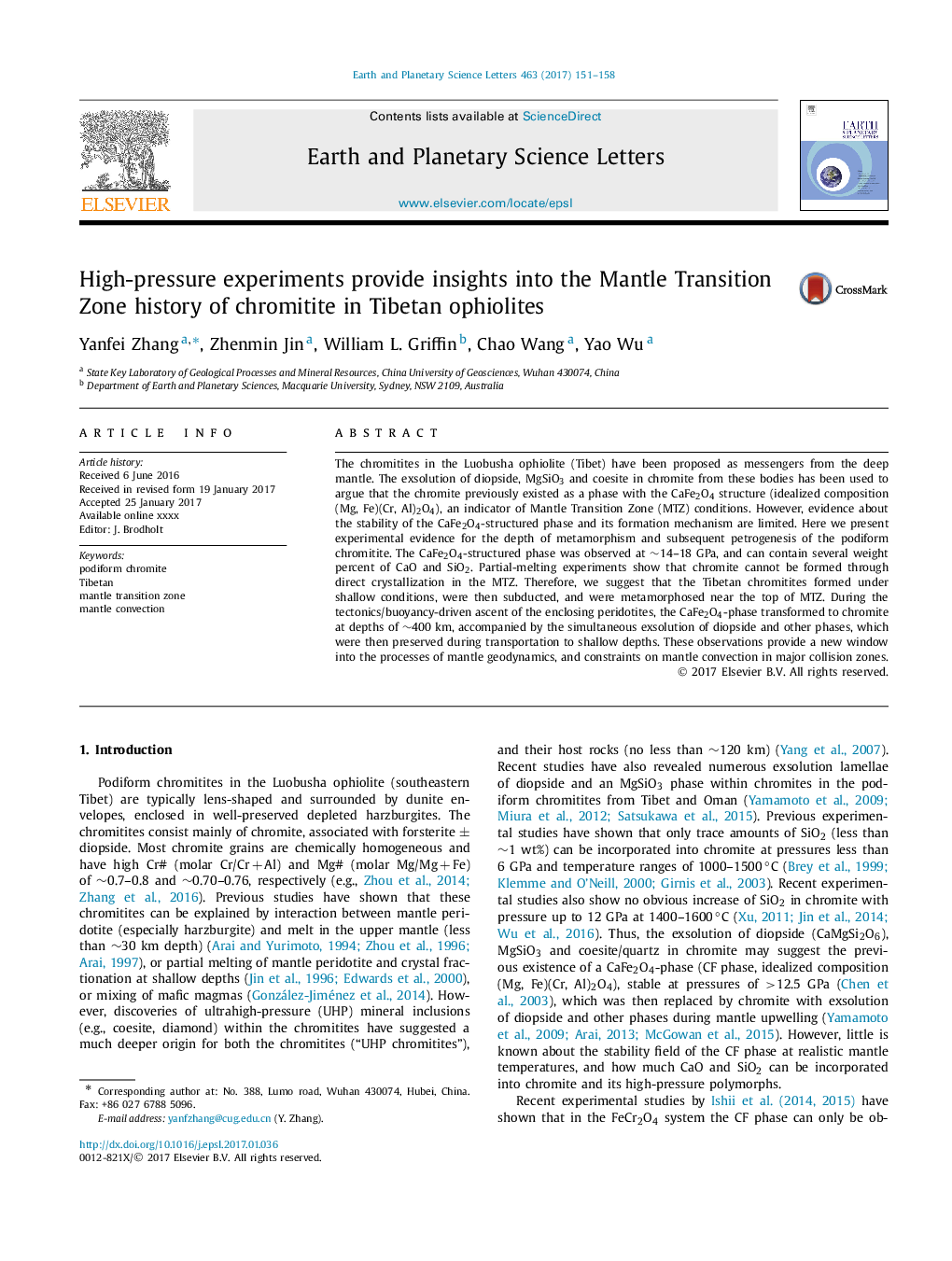| Article ID | Journal | Published Year | Pages | File Type |
|---|---|---|---|---|
| 5780099 | Earth and Planetary Science Letters | 2017 | 8 Pages |
Abstract
The chromitites in the Luobusha ophiolite (Tibet) have been proposed as messengers from the deep mantle. The exsolution of diopside, MgSiO3 and coesite in chromite from these bodies has been used to argue that the chromite previously existed as a phase with the CaFe2O4 structure (idealized composition (Mg, Fe)(Cr, Al)2O4), an indicator of Mantle Transition Zone (MTZ) conditions. However, evidence about the stability of the CaFe2O4-structured phase and its formation mechanism are limited. Here we present experimental evidence for the depth of metamorphism and subsequent petrogenesis of the podiform chromitite. The CaFe2O4-structured phase was observed at â¼14-18 GPa, and can contain several weight percent of CaO and SiO2. Partial-melting experiments show that chromite cannot be formed through direct crystallization in the MTZ. Therefore, we suggest that the Tibetan chromitites formed under shallow conditions, were then subducted, and were metamorphosed near the top of MTZ. During the tectonics/buoyancy-driven ascent of the enclosing peridotites, the CaFe2O4-phase transformed to chromite at depths of â¼400 km, accompanied by the simultaneous exsolution of diopside and other phases, which were then preserved during transportation to shallow depths. These observations provide a new window into the processes of mantle geodynamics, and constraints on mantle convection in major collision zones.
Related Topics
Physical Sciences and Engineering
Earth and Planetary Sciences
Earth and Planetary Sciences (General)
Authors
Yanfei Zhang, Zhenmin Jin, William L. Griffin, Chao Wang, Yao Wu,
